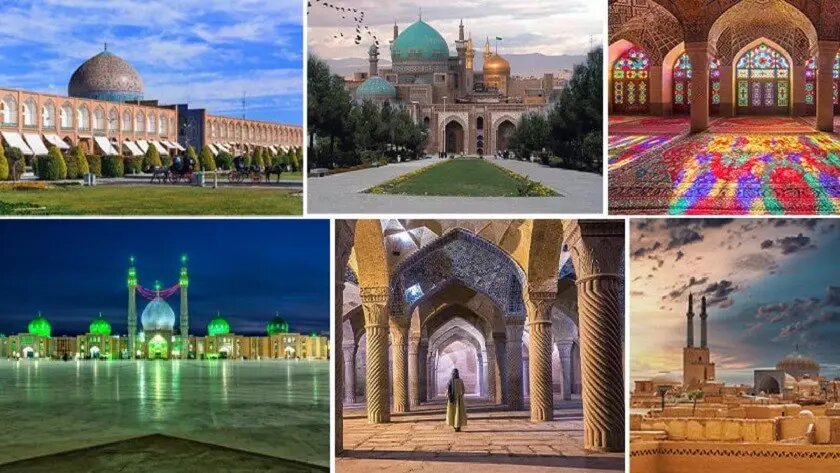TEHRAN – Iran has taken an important step towards the possible inscription of its historic mosques as collective property on the UNESCO World Heritage List.
So far, a shortlist of 34 mosques from 12 different provinces has been made, which will undergo a comprehensive investigation and field study in order to prepare a comprehensive dossier for submission, ISNA reported on Saturday.
Abdolrasul Vatandoust, the project manager responsible for the UNESCO World Heritage nomination of the “Iranian Mosques”, announced the start of this enormous project and described it as one of the most significant initiatives to protect Iranian cultural heritage in the last 50 years.
Speaking to ISNA, Vatandoust, who previously represented Iran in the successful registration of the Hegmataneh and Persian Caravanserai sites, said that preliminary studies for the dossier had begun, but the more critical and time-consuming field work was still pending, which would require significant financial resources and cooperation with provincial authorities and other relevant organizations.
He added that the selected buildings represented the architectural development of mosque architecture in Iran from the early Islamic period to the present day.
Vatandoust noted that the current list of 34 mosques may change over the next year or two, with some mosques potentially added or removed as research progresses. “The main goal is to ensure that these mosques are thoroughly documented and researched in time for submission.”
The project, commissioned by the Ministry of Cultural Heritage, Tourism and Handicrafts, aims to complete the dossier by the end of this year and submit it to UNESCO the following year. However, Vatandoust stressed that the success of this schedule depends to a large extent on securing the necessary resources, particularly for tasks such as documentation, laser scanning, aerial photography and fieldwork.
Elsewhere in his remarks, the expert addressed whether mosques already on the World Heritage List, such as the Jameh Mosque of Isfahan, would be included in this new nomination. He confirmed that the Iranian Mosques dossier was conceived as a chain of interconnected sites and that the exclusion of any of these already registered mosques would jeopardise the integrity of the entire proposal.
“The aim of the dossier is to show the architectural development of mosques in Iran from the Islamic era to the present day,” he emphasized.
So far, Iran has successfully inscribed 28 sites on the UNESCO World Heritage List, the latest being Hegmataneh, which was added on August 6, 2024. Iran is expected to propose “Falak-ol-Aflak Castle and Khorramabad Valley” for inscription at the next UNESCO session, while several other dossiers, including those on “Iranian Mosques,” “Iranian Windcatchers,” “Iranian Houses,” and the “Cultural Landscape of Masuleh,” are currently under process.
Stunning domes and minarets that are part of the country’s mosques can be seen in almost every town and village. These architectural elements have become iconic, and some mosques are considered timeless masterpieces of Islamic architecture.
Architecturally, Iranian mosques exhibit great diversity, influenced by regional differences in geometry, materials and style. These mosques often feature complex structures decorated with colorful tiles and symbolic patterns, reflecting the unique architectural traditions of each region.
Some of the most beautiful mosques in Iran that are worth visiting include Nasir al-Mulk Mosque in Shiraz, Sheikh Lotfollah Mosque in Isfahan, Shah Cheragh Mosque in Shiraz, Imam Mosque in Isfahan, Jameh Mosque of Yazd, Blue Mosque in Tabriz, Goharshad Mosque in Mashhad, Vakil Mosque in Shiraz and Agha Bozorg Mosque in Kashan.
A mosque, known locally as a “masjed” or “masjid” (meaning “place of prostration” before God), is a central place of worship in Islam. In Iran, mosque architecture is characterized by symmetry, intricate geometric patterns, and bright colors.
AM

